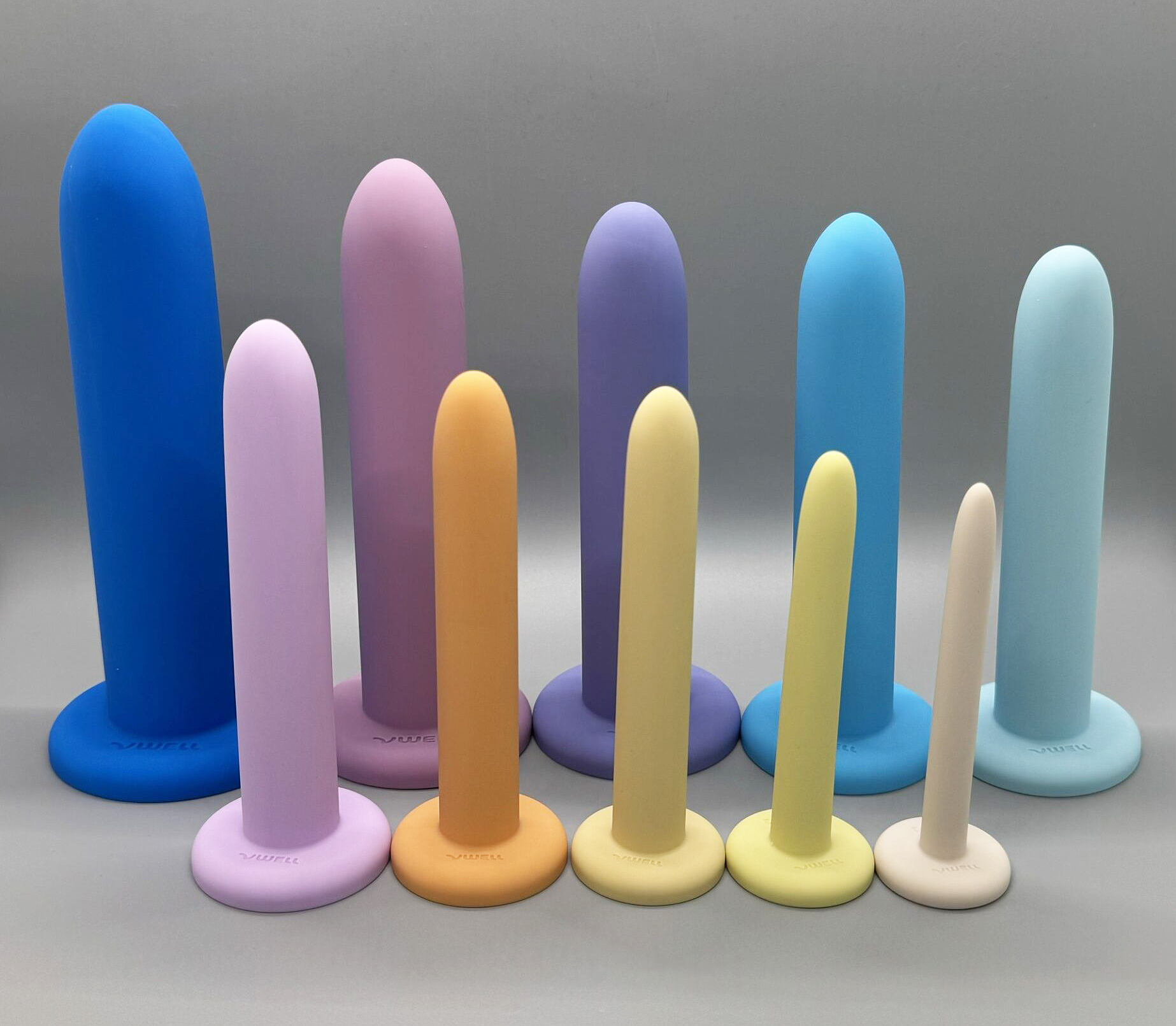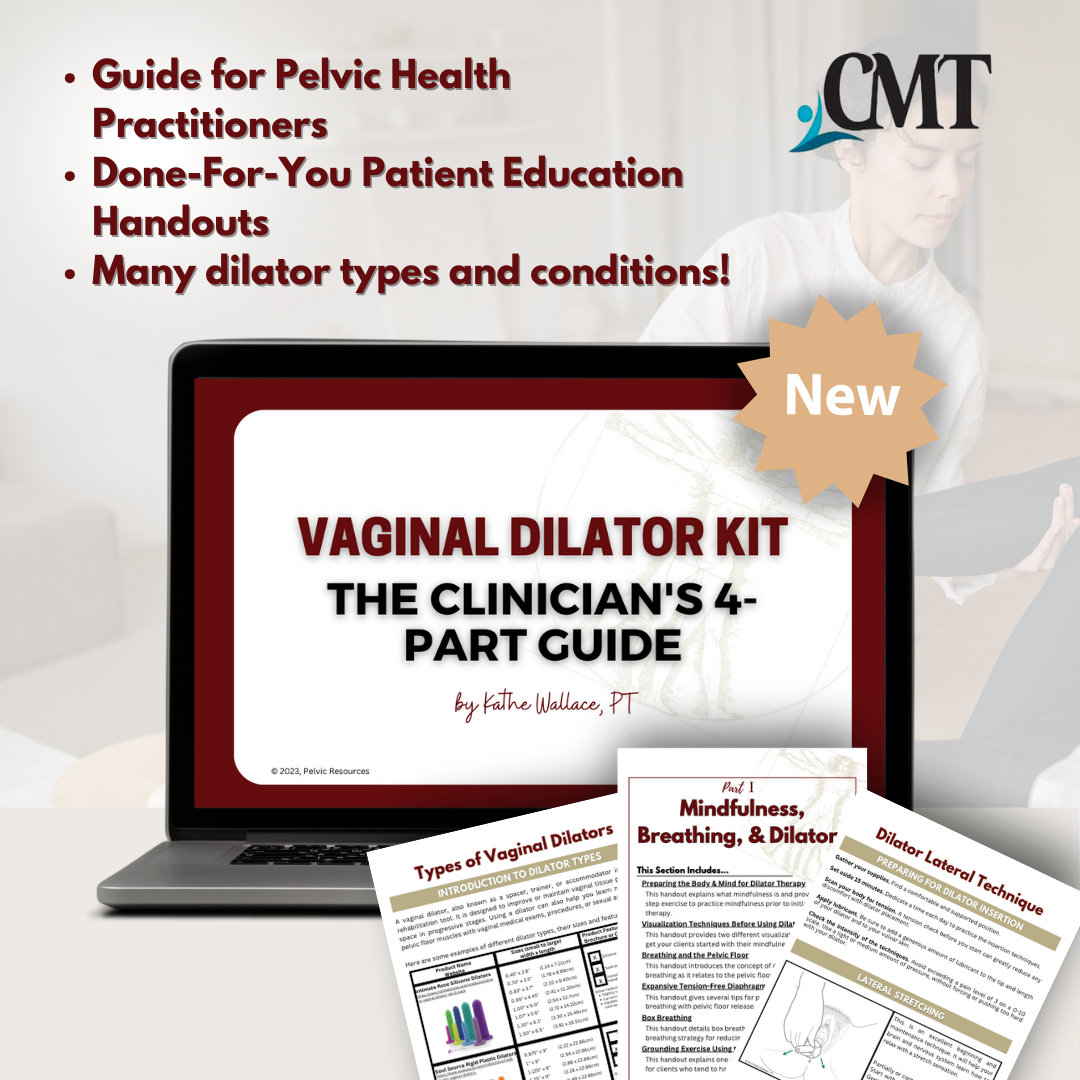
How Dilators Support Your Pelvic Health
Store / Pelvic Pain / Dilators
By Kathe Wallace, PT, BCB-PMD
Available from the Author: Vaginal Dilator Kit: The Four Part Guide by Kathe Wallace
Dilators, also known as spacers or trainers, are small, tube-shaped tools often recommended by healthcare providers to help people experiencing changes in their pelvic area.
These changes can happen due to medical conditions, surgeries, or treatments that affect the vagina, anus and surrounding structures. Here’s a look at some of the situations where dilators are commonly used:
- Congenital conditions, like MRKH syndrome, where the reproductive organs develop differently from birth.
- Surgery recovery, for example, after hysterectomy, prolapse repair, or gender-affirming surgery.
- Cancer treatment side effects, from pelvic region radiation or hormone suppression
- Menopausal changes like Genitourinary Syndrome of Menopause (GSM) or vulvovaginal atrophy (VVA), often caused by lower estrogen levels.
- Muscle tension and soft tissue restrictions in the genitals.
Dilators can be helpful in these cases because they assist in maintaining or restoring vaginal or anal flexibility and function.
They’re often recommended to reduce issues like narrowing, scarring, and discomfort, which can arise from these conditions or treatments.
Enhancing Sexual Comfort and Function with Dilators
Pain during vaginal or anal penetration is a common and treatable issue. Dilators can be recommended for individuals experiencing discomfort during sexual activity or those who have tightness that hinders penetration.
Conditions such as vulvodynia (chronic vulvar pain), vestibulodynia (pain around the vaginal opening), lichen sclerosus (a skin condition affecting the vulva), interstitial cystitis (bladder pain syndrome), perineal tears or episiotomies after childbirth, painful bladder syndrome, and anismus (difficulty relaxing for bowel movements) can all contribute to this discomfort.
Dilators gently stretch and relax the pelvic muscles and tissues, helping to gradually alleviate discomfort and enhance sexual comfort.
By expanding the vaginal and anal canals, dilators can adjust the nervous system’s response to penetration, easing painful areas and promoting healing over time.
For individuals facing insertion challenges due to pelvic floor muscle tension, vaginismus, or anismus, dilators can be particularly beneficial.
These conditions may make activities such as gynecological and prostate exams or sexual intercourse painful or impossible. In such cases, dilators are often used in conjunction with techniques to manage muscle tension and anxiety related to insertion.
Along with using dilators, mindfulness and controlled breathing strategies can be effective in managing muscle responses, especially when fear or anxiety is present. Understanding the connection between pain and anxiety can make dilator use more manageable, ultimately allowing individuals to regain control over their experiences.
Using Dilators for Chronic Pelvic Pain
Chronic pelvic pain can significantly affect quality of life, with symptoms ranging from pain around the pelvic bones, sacroiliac joint, or pubic area to bladder and bowel difficulties.
Conditions like pelvic pain may involve ongoing discomfort in these areas and sometimes in areas like the coccyx (tailbone). Vaginal dilators can be part of a broader approach to treatment, often in combination with other therapies.
When used in chronic pain management, dilators work by helping to improve the flexibility and function of the pelvic floor muscles and reduce pain signals from the nervous system. This approach can help lessen pelvic pain, reduce muscle tightness, and gradually give people more control over their daily activities.
 Are Dilators Right for You?
Are Dilators Right for You?
Dilators are versatile tools that offer support and relief to people dealing with various pelvic health challenges. Whether you’re affected by changes in anatomy, pain with sexual activity, chronic pelvic pain, or conditions that cause pelvic muscle tension or tissue changes, dilators may be a valuable part of your journey toward better pelvic health.
Choosing the right dilator and understanding how to use it safely can make a big difference in your progress. With support from a pelvic health specialist, many people find greater confidence, comfort, and control over their pelvic health.
While the timeline for results can vary, many eventually reach their goals—whether that’s pain-free sexual activity or simply greater comfort in daily life.
Available from the Author: Vaginal Dilator Kit: The Four Part Guide by Kathe Wallace

